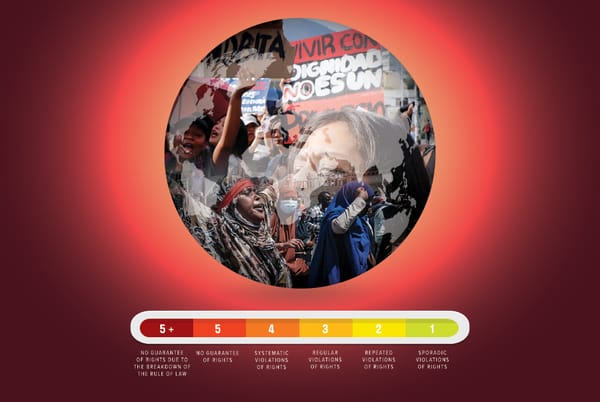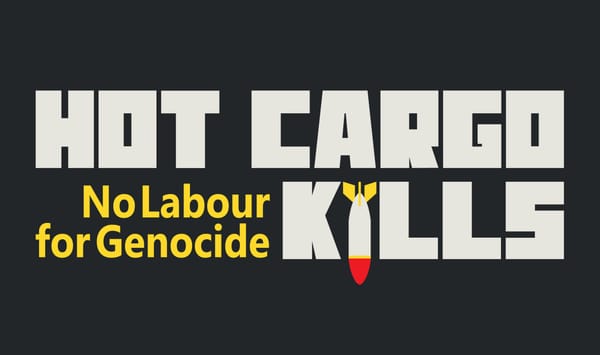
Every year, the Canadian Centre for Policy Alternatives (CCP) releases a report tracking CEO compensation in Canada. This year’s edition, reporting on 2020 data, “Another Year in Paradise,” authored by economist David Macdonald, was released last week. As expected, the report’s findings are as enraging as they are unsurprising. Corporate executives hauled it home by the truckloads, while essential workers and the broader public struggled through a deadly pandemic.
According to Macdonald’s findings, the 100 highest paid CEOs in Canada “earned” (I use that term loosely) an average of $10.9 million in total compensation in 2020, their second best year on record.
For anyone aspiring to join the upper echelon of the c-suite, the price of admission — i.e. the “minimum salary” necessary to be counted among the top 100 in 2020 — was $6.1 million, the third highest in Canadian history, just behind 2019 and 2018.
Moreover, the top corporate executives saw an average annual pay increase of $95,000 from 2019 to 2020, despite the continued economic ravages of the pandemic. Lest you think the corporate elite didn’t also “suffer” losses throughout the pandemic, the top 100 are still roughly $900,000 behind their historic earnings in 2018. We’re all in this together.
Sarcasm aside, 2020 was a bonanza for the wealthiest CEOs in Canada, who earned 191 times the wages of the average worker. As Macdonald writes: “Before lunch hour on the first working day of 2022, January 4, Canada’s highest-paid CEOs will have already racked up the same amount of pay that will take the average worker the entire year to accrue.”
However, as the report points out, the CEO-to-worker pay ratio is actually the lowest it’s been since 2014. This isn’t because inequality is shrinking, but rather that the pandemic hit low-wage workers the hardest: many such workers were unemployed, and thus simply not counted in the income data. More than half of workers earning $17 per hour or less either lost their jobs or the majority of their working hours in early 2020. Removing low-wage workers from the count gives the appearance that the ratio of average worker pay to CEO compensation is improving, when in fact inequality grew during the pandemic.
The disparity between CEO and worker compensation is bad enough in “normal” times. But the past two years have been anything but normal. We’re talking about an economy that continued to be gripped by a deadly pandemic with periodic lockdowns, unemployment numbers through the roof and huge injections of government cash keeping things afloat. Yet all this financial turmoil barely touched the executive suites. As the report summarizes, CEO pay in Canada is largely “impervious to external shocks.” That’s putting it lightly.
Unlike most workers who receive wages or a salary for their labour, a huge portion of CEO compensation is made up of various bonuses, incentive-based pay and stock options. In other words, “base salary” makes up very little of most highly-paid CEOs’ compensation. Among the 100 CEOs covered in the CCPA study, so-called “variable pay” accounted for 82 per cent of total compensation, up from 70 per cent a decade earlier.
The report finds that the largest publicly-listed corporations changed their executive remuneration policies to limit the impacts of the pandemic on CEO compensation. Whether this involved swapping which factors to include in performance pay, adjusting financial results to account for COVID-19, changing the time frame within which returns were evaluated or simply handing out additional cash bonuses, companies worked to shield top executives from the economic impacts of the pandemic.
Twenty-three of the top 100 CEOs took salary cuts in 2020. But because “base salary” is such a small component of overall CEO compensation (about 11 per cent), these “cuts” had little impact on total pay. In fact, almost half (10) of these CEOs still saw their total compensation grow, even after base salary cuts.
Looking back over CEO compensation from the 2008 Financial Crisis onward, a similar story appears. Total compensation shows limited, barely noticeable, losses, as “salaries” are cut in the short-term and performance-based pay is marginally hit. Yet when the government bailouts and subsidies start rolling in, the wealthiest are the first to “recover” their relatively minor losses. CEOs again start making out like bandits.
The story of CEO compensation during the COVID-19 pandemic is much the same. As the federal and provincial governments funnelled cash to businesses large and small (mostly large), the top CEOs of supposedly distressed corporations continued to take home exorbitant pay. Among the top 100 CEOs, 30 sat atop corporations that received the Canada Emergency Wage Subsidy (CEWS). Not only did these huge corporations compensate their CEOs outrageously while receiving government aid through CEWS, many also continued to pay dividends to shareholders, despite claiming to be experiencing “large declines in revenue.”
As Macdonald puts it: “Despite being in the title, there was no requirement that CEWS actually went toward workers’ wages. While it was calculated as a proportion of Canadian payroll, companies didn’t have to show that it went to payroll. It could have gone to anything that the company wished, including increased executive bonuses.” Moreover, as Doug Nesbitt at Rank and File reported, the CEWS also went to companies actively engaged in union-busting. Quite a racket.
After government rule changes in 2021, companies could no longer collect the CEWS while paying their executives more than they did in 2019. But by this point, most of the damage had already been done.
While individual income support through programs like the Canada Emergency Response Benefit (CERB) totalled approximately $150 billion, when all levels of government spending are factored in, business subsidies accounted for even more, totaling $176 billion. In late October 2021, the federal government shuttered the revamped Canada Recovery Benefit (CRB) and threw 800,000 self-employed workers off of pandemic income support, despite the threats of new COVID-19 variants. As I’ve written about previously, the Liberals replaced CERB and CRB with an entirely inadequate Canada Worker Lockdown Benefit, which they clearly expected no one to access.
By contrast, the Liberals replaced the CEWS and the business rent subsidy program with two new, more targeted, business subsidies: the Tourism and Hospitality Recovery Program and the Hardest Hit Business Recovery Program. Macdonald estimates that these two new programs will support at least a quarter of former CEWS recipients. As throughout the pandemic, government support has disproportionately gone to business, not workers. This is particularly the case when one considers the serious lack of rules or stipulations placed on the pandemic aid that flowed to large corporations.
There’s plenty in the new CCPA report to produce public outrage. Macdonald has been making the rounds in the major Canadian news outlets, with “Another Year in Paradise” receiving favourable coverage in the Toronto Star and the CBC, among other publications. But one also hopes that cynicism hasn’t set in after years of hearing just how bad inequality has become in the face of government inaction and unwillingness to do anything substantial to address it.
Macdonald proposes several measures to bring “a greater modicum of fairness to CEO pay.” Most of these proposals involve reforming the tax code to make more of CEO compensation taxable, and to fill public coffers while also reducing overall inequality. Indeed, taxing capital gains like other income and raising marginal tax rates would go some distance in reining in outlandish executive compensation.
The report’s boldest recommendation, however, involves introducing a wealth tax. As Macdonald writes, “[S]tock options and stock awards […] are valued when they are given out, not when they are eventually sold. In most cases, executives are making far more upon sale than what is being reported. Large holdings of company stock as a result of these award types make the net worth gap between CEOs and average Canadians much larger than the 191 times income gap.”
A wealth tax, by allowing the government to tax wealth in the form of stocks and other assets on a yearly basis, has the most potential to address the rampant inequality that plagues our late capitalist economy.
However, we should also bear in mind that all taxes address inequality after-the-fact through redistribution. Ultimately, we want an economy that doesn’t produce grotesque inequality in the first place. We need workers with the collective power to extract more from their bosses through collective bargaining. And we want an equitable distribution of society’s resources that can only come about by equalizing the ownership of the economy through something like a social wealth fund.
Raising wages and taxing the elite are a great start, but ultimately we want to own the things that generate wealth.







